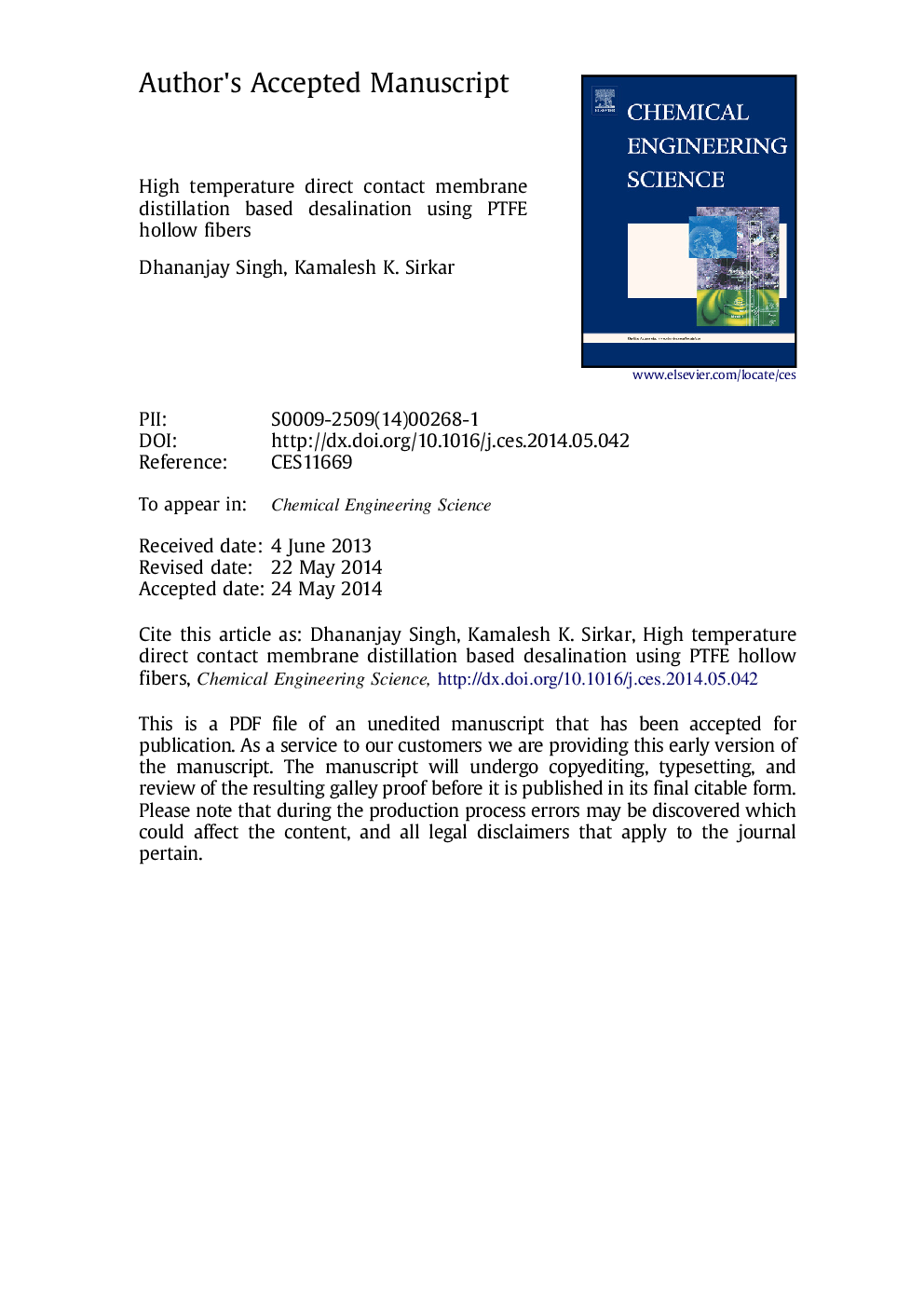| Article ID | Journal | Published Year | Pages | File Type |
|---|---|---|---|---|
| 6591164 | Chemical Engineering Science | 2014 | 48 Pages |
Abstract
Thermally driven direct contact membrane distillation (DCMD)-based desalination process involving a microporous hydrophobic membrane separates a hot brine feed and a cold distillate which condenses the water vapor coming from the hot brine through the gas-filled membrane pores. Conventionally DCMD has been explored for hot brines and other aqueous solutions below 100 °C. For feed brines above 100 °C, desalination by a conventional membrane technique, such as, reverse osmosis (RO) requires cooling of the feed solution costing additional energy since RO cannot utilize the heat available in the feed solution; DCMD process is ideally suited for such a process. Produced water obtained from steam assisted gravity drainage (SAGD) process is one such example where DCMD can potentially be a very useful process. This process has been explored earlier with flat porous polytetrafluoroethylene (PTFE) membranes. In this paper, desalination by the DCMD technique has been explored in the temperature range of 50-120 °C for brine solutions containing 10,000 ppm sodium chloride using microporous PTFE hollow fiber membranes. The pressure of the solution went up to 2-3 atm. There was no leakage of salt under any conditions. The highest water vapor flux achieved was 115 kg/m2 h at 118 °C, which is close to an order of magnitude higher than that for seawater reverse osmosis (RO) processes. A simulated SAGD produced water was also successfully desalinated.
Related Topics
Physical Sciences and Engineering
Chemical Engineering
Chemical Engineering (General)
Authors
Dhananjay Singh, Kamalesh K. Sirkar,
